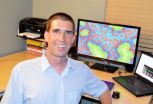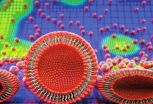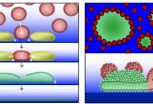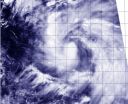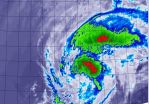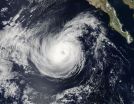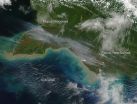(Press-News.org) In popular culture, mathematics is often deemed inaccessible or esoteric. Yet in the modern world, it plays an ever more important role in our daily lives and a decisive role in the discovery and development of new ideas — often behind the scenes.
UC Santa Barbara's Paul Atzberger, a professor in the Department of Mathematics and an assistant professor of mechanical engineering, often works in areas where science and math intersect. Some of his recent research published in the Proceedings of the National Academy of Science (PNAS) and featured on the cover of the journal Soft Matter focuses on problems specific to lipid bilayer membranes. These microscopic structures can form a sheet that envelopes the outside of a biological cell in much the same way that human skin serves as the body's barrier to the outside environment.
In the PNAS paper, Atzberger and his graduate student Jon Karl Sigurdsson worked in collaboration with the experimental laboratory of Patricia Bassereau and David Lacoste at the Institut Curie in Paris, to develop new mathematical approaches to gain insights into how proteins move around within lipid bilayer membranes.
"Proteins are not just passive voyagers within the bilayer, but rather their very presence can change the local properties of the lipid bilayer membrane in interesting ways," Atzberger said. "This includes bending the bilayer with a local preferred curvature or changing the nature of a viscous flow. This dual coupling of responding to the local geometry while also affecting it makes it very difficult to formulate concise models and to make predictions."
To address these issues, Atzberger developed a statistical mechanics description of the membrane sheet and the proteins based on his past work on immersed-boundary approximations. The idea is to treat the heterogeneous membrane-protein material uniformly but use a moving marker to demarcate the parts associated with the proteins. This approach allows for a simple and reliable description, which captures many of the essential features of membrane-protein dynamics and not only facilitates not only performing analytic calculations but also carrying out efficient computational simulations.
"It used to be just theory and experiment," Atzberger added. "Now computation serves an ever more important third branch of science. With simulations, one can take underlying assumptions into account in detail and explore their consequences in novel ways. Of course, theory and abstraction are still very important to gain understanding. What computation provides is the ability to grapple with a level of detail and complexity that is often simply beyond the reach of pure theoretical methods."
Sophisticated mathematics is often required to bridge the realms of theory, simulation and experiment. Atzberger notes that the order of complexity in biology is especially tricky.
"If you look at a biological cell, many of our current methods for investigation are similar to looking down from a low-altitude blimp at a big city such as New York or Hong Kong," he explained. "It's phenomenally complex, and the level of understanding that can be attained with current methods — while impressive — is also very limited. While experimental methods are advancing, it cannot be ignored that new mathematical approaches are going to be needed for progress."
For example, Atzberger's collaboration with his colleagues in France sought to explore specific mechanisms by which proteins move within bilayers using the idea that the protein locally bends the bilayer and creates a little bump that moves along with the protein.
"Not only is the protein diffusing but so is that little bump that has to be carried along with it," Atzberger explained. "This idea has been suggested by a number of theoretical papers. However, in practice this is a really hard thing to measure, particularly because such a mechanism cannot be seen directly since it occurs on length scales that are smaller than the wavelength of visible light. A typical protein is about 10 nanometers in size; the wavelength of visible light is on the order of 300 to 700 nanometers."
Because the researchers could not make direct observations, they tagged the protein with quantum dots that emit light when excited. They then tracked and analyzed the motions of individual quantum dots to obtain a measurement of how the individual proteins moved within the bilayer. Like temporarily pulling wrinkles out of a shirt, they applied a tension that would reduce the size and shape of a possible bump induced by a protein. The investigators found that the locally induced shape appears to matter a great deal to a protein's rate of diffusive motion within the bilayer.
"This showed us that you cannot ignore the local interactions of the protein that augment the bilayer when considering protein motion," Atzberger said. "Unlike a particle diffusing in a simple fluid, such complex membrane-protein interactions appear to be at the heart of protein diffusion.
"These studies are potentially useful, since the rates of protein diffusion play an important role in many cellular processes," he added. "If you really understand the underlying mechanisms responsible for protein diffusion, you might be able to come up with novel ways to augment it."
In related work with UCSB colleagues, Atzberger has also applied his mathematical expertise to analyze experiments on supported lipid bilayers (SLB). SLBs are membrane sheets that are bound directly to a surface or anchored in close proximity. They are important in many biophysical studies of membrane-protein interactions and in the development of biosensors.
Atzberger analyzed experiments conducted by Kim Weirich, then a student in UCSB's interdepartmental graduate program in biomolecular science and engineering, who investigated an approach in which lipid vesicles are induced to rupture on the substrate to form the SLB. A big challenge is to obtain reliable vesicle rupture and coverage of the substrate.
To better understand this process, Atzberger and his students developed a mathematical model and computational methods to study the stages in the process of SLB formation. A central question addressed by the model concerns how the SLB process initiates from the crowding of vesicles on the substrate. Another important question is how the lipids from the ruptured vesicles spread out on the substrate as either isolated islands that grow in size or as a multitude of small distinct islands that merge in parallel.
"Using our computational methods, we were able to simulate rupture events and island dynamics that matched well the trends seen in the experimental data," Atzberger said. "This led us to strongly favor a specific hypothesis concerning the SLB formulation process: that a local critical concentration of vesicles is required and that the rupture occurs from a mechanism we call 'adhesive jamming.'
"By attempting to model the experimental data quantitatively, we found that many of our initial ideas were simply not plausible," he added. "This led — after a fair amount of thought — to our final model. Of course, more experimental work will be required to see if our theory is ultimately correct. This work was featured on the cover of the journal Soft Matter.
"I'm proud of these works because we managed to make links between theory, computation and experiment," Atzberger concluded. "One of my goals as an applied mathematician is to be a bridge between these worlds. When everything comes together harmoniously, this type of research is not only productive but also a lot of fun."
INFORMATION:
At the interface of math and science
UCSB's Paul Atzberger uses mathematics to advance problems in the sciences
2014-09-29
ELSE PRESS RELEASES FROM THIS DATE:
Newborn Tropical Storm Phanfone triggers warnings in Northwestern Pacific
2014-09-29
NASA's Aqua satellite passed over newborn Tropical Storm Phanfone on Sept. 29 and captured a picture of the storm that showed thunderstorms wrapped tightly around the storm's center, and a large band of thunderstorms spiraling into the center from the east. Phanfone is now a threat to various islands and warnings are in effect.
A tropical storm Warning is in effect for Saipan, Tinian, Pagan and Alamagan. In addition, a typhoon watch is in effect for the northern Marianas Islands, including Pagan and Alamagan.
The Moderate Resolution Imaging Spectroradiometer (MODIS) ...
NASA sees Tropical Storm Kammuri winding down over open ocean
2014-09-29
Tropical Storm Kammuri continues to appear more like a cold front on satellite imagery as it transitions into an extra-tropical storm over the Northwestern Pacific Ocean.
When NASA's Terra satellite passed over Kammuri on Sept. 29 at 7:40 a.m. EDT (11:40 UTC), the Moderate Resolution Imaging Spectroradiometer or MODIS instrument captured an infrared look at the storm. MODIS showed that the bulk of strong storms elongated from southwest to northeast.
On Sept. 29, 2014 at 0300 UTC (Sept. 28 at 11 p.m. EDT) Tropical Storm Kammuri had maximum sustained winds near 45 knots ...
NASA's Aqua satellite sees Rachel before losing hurricane status
2014-09-29
Tropical Storm Rachel strengthened into a hurricane over the weekend of Sept. 27 and 28, only to weaken back into a tropical storm by Sept. 29. NASA's Aqua satellite passed over Rachel before it weakened and took a visible picture of the storm off Baja California's coast.
Rachel became the Eastern Pacific Ocean's twelfth hurricane on Saturday, Sept. 27 at 5 p.m. EDT when maximum sustained winds reached 75 mph (120 kph). When NASA's Aqua satellite saw Rachel, the maximum sustained winds were at the same strength. At that time, Rachel's center was 485 miles (780 km) west ...
MaxBin: Automated sorting through metagenomes
2014-09-29
Microbes – the single-celled organisms that dominate every ecosystem on Earth - have an amazing ability to feed on plant biomass and convert it into other chemical products. Tapping into this talent has the potential to revolutionize energy, medicine, environmental remediation and many other fields. The success of this effort hinges in part on metagenomics, the emerging technology that enables researchers to read all the individual genomes of a sample microbial community at once. However, given that even a teaspoon of soil can contain billions of microbes, there is a great ...
Adding uncertainty to improve mathematical models
2014-09-29
PROVIDENCE, R.I. [Brown University] — Mathematicians from Brown University have introduced a new element of uncertainty into an equation used to describe the behavior of fluid flows. While being as certain as possible is generally the stock and trade of mathematics, the researchers hope this new formulation might ultimately lead to mathematical models that better reflect the inherent uncertainties of the natural world.
The research, published in Proceedings of the Royal Society A, deals with Burgers' equation, which is used to describe turbulence and shocks in fluid flows. ...
New ways to treat anemia could evolve from acetate supplement research
2014-09-29
DALLAS – Sept. 29, 2014 – UT Southwestern Medical Center researchers seeking novel treatments for anemia found that giving acetate, the major component of household vinegar, to anemic mice stimulated the formation of new red blood cells.
Currently, the hormone erythropoietin is administered to treat anemia, but this treatment carries with it side effects such as hypertension and thrombosis (blood clotting). The new research, which was performed in mice, suggests that acetate supplements could eventually be a suitable supplement or possibly even an alternative to administration ...
Fires in Papua, Indonesia and New Guinea
2014-09-29
According to a NASA story from 2009, "human activities in this area of the world have contributed to the growing fire emissions issue. Palm oil is increasingly grown for use as a cooking oil and biofuel, while also replacing trans fats in processed foods. It has become the most widely produced edible oil in the world, and production has swelled in recent years to surpass that of soybean oil.
The environmental effects of such growth have been significant. Land has to be cleared to grow the crop, and the preferred method is fire. The clearing often occurs in drained peatlands ...
Modeling shockwaves through the brain
2014-09-29
Since the start of the military conflicts in Iraq and Afghanistan, more than 300,000 soldiers have returned to the United States with traumatic brain injury caused by exposure to bomb blasts — and in particular, exposure to improvised explosive devices, or IEDs. Symptoms of traumatic brain injury can range from the mild, such as lingering headaches and nausea, to more severe impairments in memory and cognition.
Since 2007, the U.S. Department of Defense has recognized the critical importance and complexity of this problem, and has made significant investments in traumatic ...
Self-compassion key to positive body image and coping
2014-09-29
Women who accept and tolerate their imperfections appear to have a more positive body image despite their body mass index (BMI) and are better able to handle personal disappointments and setbacks in their daily lives.
Research out of the Faculty of Arts at the University of Waterloo found that this self-compassion might be an important means to increase positive body image and protect girls and young women against unhealthy weight-control practices and eating disorders.
"Women may experience a more positive body image and better eating habits if they approach disappointments ...
Chefs move to schools can increase school meal participation and vegetable intake among students
2014-09-29
Gourmet pizza in school? According to a new Food and Brand Lab pilot study, published in Appetite, chef-made meals can increase participation in the National School Lunch Program (NSLP) by 9% and overall selection and consumption of vegetables by 16%!
Chefs Move to Schools (CMTS), an initiative of Michelle Obama's Let's Move campaign, pairs chefs with schools in order to provide nutrition instruction to students and culinary advice to interested school food service workers.
A CMTS event was held in an Upstate New York high school (of 370 students) and researchers David ...
LAST 30 PRESS RELEASES:
Rhythm contains important information for the cell
Nitrogen is key to faster regrowth in deforested areas, say researchers
Recovering tropical forests grow back nearly twice as fast with nitrogen
A new diet option for mild-to-moderate Crohn’s disease
Electric vehicles could catch on in Africa sooner than expected
New test could help pinpoint IBD diagnosis, study finds
Common eye ointment can damage glaucoma implants, study warns
ACCESS-AD: a new European initiative to accelerate timely and equitable AD diagnosis, treatment and care
Mercury exposure in northern communities linked to eating waterfowl
New Zealand researchers identify brain link to high blood pressure
New research confirms people with ME/CFS have a consistent faulty cellular structure
Hidden cancer risk behind fatty liver disease targets
Born in brightness, leading to darkness
Boron-containing Z-type and bilayer benzoxene
Hong Kong researchers break the single-field barrier with dual-field assisted diamond cutting
Work hard, play hard?
Wood becomes smart glass: Photo- and electro-chromic membrane switches tint in seconds
The Lancet: COVID-19 vaccine hesitancy decreased over time, though mistrust persists among certain groups, study of over 1 million people in England suggests
Psychosis patients ‘living in metaphor’ -- new study radically shifts ideas about delusions
Clinical trial in Ethiopia targets the trachoma scourge
Open-sourcing the future of food
Changes in genetic structure of yeast lead to disease-causing genomic instabilities
UC San Diego Health Sciences Grant Writing Course helps launch successful research careers
Study: Many head and neck cancer trials end early. Why?
Tufts vice provost for research named Foreign Fellow of Indian National Science Academy
New model improves prediction of prostate cancer death risk
Two wrongs make a right: how two damaging variants can restore health
Overlooked decline in grazing livestock brings risks and opportunities
Using rare sugars to address alcoholism
Research alert: New vulnerability identified in aggressive breast cancer
[Press-News.org] At the interface of math and scienceUCSB's Paul Atzberger uses mathematics to advance problems in the sciences
